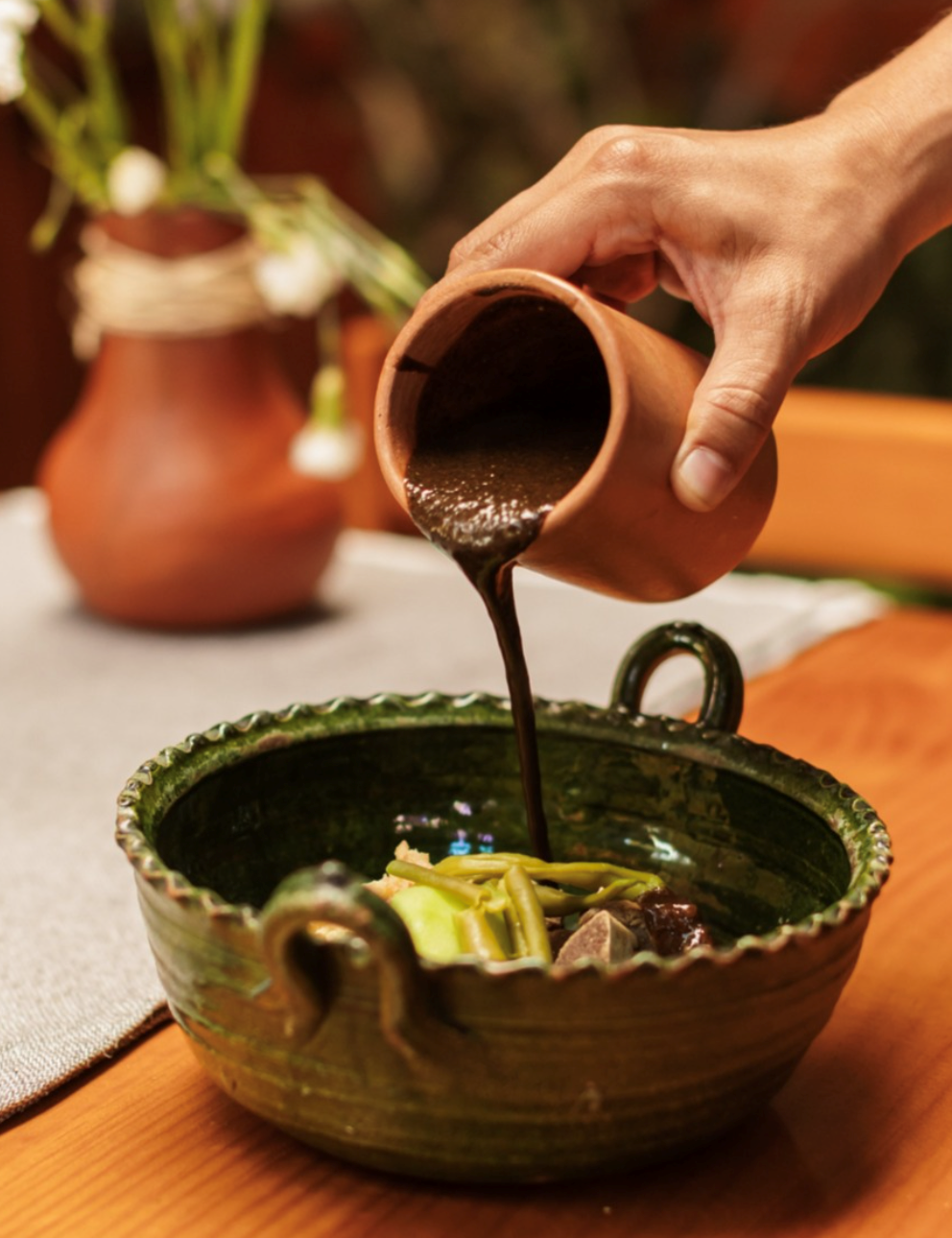

From the coast to the mountains, four states summarize the variety of this monumental sauce: Oaxaca, Guerrero, Puebla and Veracruz. Each one holds centuries-old recipes that deserve a pilgrimage.
Negro, coloradito, rojo, amarillo, verde, chichilo and manchamanteles form the classic palette. The black Oaxacan, with chilhuacle, burnt tortilla and chocolate, is served at weddings and large parties; the manchamanteles mixes pineapple and plantain, splashing the tablecloth with fruity tones.
Where to try them
Los Pacos. Offers a “tasting” of the seven moles in tasting portions, ideal for comparing spices and nuances in one sitting. Las Quince Letras. It worships mole negro and chichilo, ground in a metate and served with ranch turkey.
In the Costa Chica dominates the red mole of coastal chili and cocoa; in the mountains, the thick green mole with pepita and tomatillo. Taxco boasts two rarities: pink mole, dyed with beets and rose petals, and mole de jumil, where tiny aromatic insects are ground alive during the Day of the Dead.
Where to try them
Rosa Amaranto, in Taxco. It serves the pink mole over pork loin and blue corn tortillas; its pastel color contrasts with a surprisingly deep spiciness. Also, at Taxco’s Sunday tianguis, street stalls prepare jumil tacos with chile costeño sauce: the most authentic (and daring) experience in the region.
The story places in the convent of Santa Rosa (XVII century) the birth of mole poblano: mulato, pasilla, chipotle, almond, raisins and chocolate balanced in a silky density. Next to it live the green pipian with pepita and epazote, the red pipian with ancho chile and sesame, and the autumnal mole de caderas with salted goat from Tehuacán.
Where to try them
El Mural de los Poblanos stands out for its classic recipe of 32 ingredients and grinding in a stone mill; pairs with poblano mezcal. Casareyna. Located inside a former earthenware factory, it offers a plate of four moles (poblano, green pipián, red pipián and white mole de piñón) to savor contrasts.
The humid Gulf climate softens the sauces. The mole de Xico shines, sweet cousin of the poblano: it has piloncillo, aged bolillo and dried fruits. Further north, in the Huasteca, the ayocote pipian is predominant, dark green due to the acuyo and topped with dried shrimp.
Where to try them
La Casa del Mole, in Xico, serves its version with guajolote criollo and freshly inflated tortillas; the mole is accompanied by a caballito of local milk coffee. El Mesón Xiqueño offers a tasting menu where mole de Xico appears in tamales, enchiladas and on smoked pork ribs.
In all these kitchens the mole is still born in a
metate, thickened over a slow fire and presented
in a communal ritual. To taste it in the emblematic
dining rooms -from the poblano colonial salon to
the fonda serrana- is to read spoonful by spoonful
the emotional geography of Mexico.
And receive exclusive information to travel through Mexico in style!